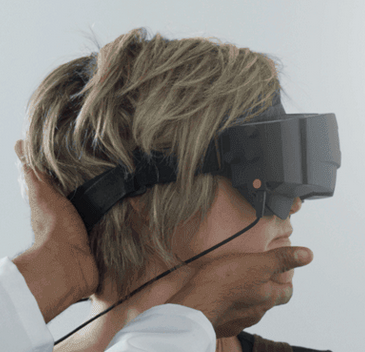Vestibular Testing (VNG)
Certain substances that affect the Central Nervous System (CNS) can influence the
results on this test. Therefore, it is very important to avoid the following for 48 hours (2 days) prior to the test:
1. No alcohol (including beer, wine, and mixed drinks)2. No medications for dizziness, allergy, cold, cough, psychotherapeutic drugs, sleeping pills, restless leg syndrome, or pain medications. Click here for a complete list of drugs to avoid.3. No caffeine on the day of the test (coffee, tea, chocolate, cola, Big Red, etc.)
Failure to comply with these instructions will compromise test results and may result in your test being rescheduled for another day. Please call to cancel if you have accidentally used anything that is not permitted.
4. You may eat, but a light meal only is recommended. You may feel nauseous or dizzy during a portion of the test, and your stomach will likely feel better without a full stomach.5. No foundation or eye make-up6. Remove contact lenses before the exam.7. Most people feel well after the test and can go about their day, however a small percentage have lingering nausea or dizziness and do not feel comfortable driving afterwards. You may wish to have a driver transport you afterwards.
THE VNG EXAM--WHAT IS IT?
The ear has two functions: auditory (hearing) and vestibular. The vestibular portion is critical for maintaining your sense of balance and spatial orientation. The VNG (Videonystagmography) is a battery of tests to assess some vestibular functions of each inner ear and central motor functions.

The vestibular system in the ear transmits signals to the eyes via the brainstem to enable you to coordinate your balance as you move about. During the VNG test battery, your eye movements are monitored to obtain information on some of the signals coming from the vestibular system. Infrared goggles are placed over the eyes to record eye movements, and will remain on you throughout the procedure. Appointments usually last about 1.5 hours.
There are 3 main parts to a VNG test:
1. Ocular MobilityYou will be asked to follow objects that jump from place to place, stand still, or move smoothly.2. PositionalYou will move your head and body into various positions to make sure that there are no inappropriate eye movements when your head is in different positions.3. Caloric TestingAs you turn your head in everyday life, fluids in the vestibular system move and cause a deflection of small hairs (stereocilia), which send electrical signals to the brain and eyes. Caloric testing will enable a measurement of how each of your ears functions separately. Each ear will be stimulated separately with both cold and warm air. This causes a convection current--heated particles move into an area of cooler fluids. It causes the fluids in one of your vestibular organs to move and stimulate the nerves without involvement of the other ear, enabling a measurement of how one ear functions compared to the other ear.

